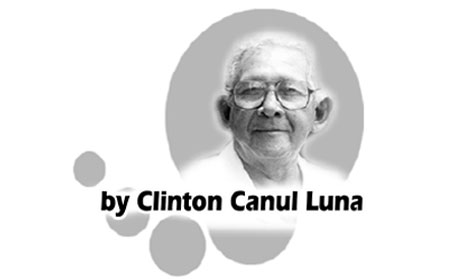The British settled and developed their first town at what is known today as St. George’s Caye. Thereafter, they brought an enslaved people from Africa who were thrown in a swampy place near which there was once a Maya village by the name Holzuz. With time, different names were used to refer to this place. Eventually, it was called Belize Town. While the British masters’ business was taking place, they created two new classes of people which were the Royal mulattos—colonial apologists, and the Creoles from the enslaved African people born in the Americas. With that being said, our dear readers of this column, permit me to present to you the official meaning of the word “Creole/Mulatto” published by http://etimologias.dechile.net/?criollo and is as follows:
Creole
Some say that the word “creole” derives from “crio”, which is what the Spaniards called their children born in the Indies. Of course, other sources say that it comes from the Portuguese “crioulo”, as was used to refer to the slaves born in America, distinguishing them from those brought directly from Africa. Corominas and most philologists agree that it is a derivation of the verb “to raise”. It is the same root as the word “servant,” which was used to refer to servants and slaves. “Criar” comes from the Latin “creare”, which means “to engender”. It is the same Indo-European root (*ker-) of other words such as create, cereal, and grow.
The word Creole is used to refer to the children of European or African parents born in America. It is used to highlight indigenous qualities and devotion to an American country. It is not used to refer to people of mixed race. The children of Spaniards with natives were called “mestizos” from the Latin, mixticius (mixed). The children of Spaniards with blacks were called “mulatos” from “mule”. In linguistics, the word creole is also used to refer to a “mixed language, created on the basis of a specific language and with the contribution of numerous elements from another or others, which frequently arises in former colonial territories and which, unlike pidgins, is transmitted from parents to children, thus becoming the language of a community”, (DLE). Gimeno makes it synonymous with amalgamation.
The Creole word also has a linguistic meaning, so that some speak (improperly) of Creole languages. There are no creole languages, but creole dialects of certain languages (such as Spanish, English, French or Portuguese), especially frequent in America and other places. They do not affect the language (the linguistic system) but the speech. The so-called Creole-speaking variants were born because a community of people, either transplanted by slavery, or from different autochthonous territorial origins and from various autochthonous languages, are forced to live together and communicate.
1. Some say that they come from a pidgin or lingua franca in which the first speakers took the structure of the language of their dominators, inserting words from the other language in contact into that structure. By inheriting that pidgin, simple and restricted in origin, its children, and inheriting it as the only spoken language, it enriches and develops out of necessity, complicating its primitive structure and becoming a creole speech (based on x, according to the original language).
2. Others do not contemplate the existence of a pidgin phase and simply explain it by the progressive evolution of a language, which by mere contact is influenced by other languages, from which terms are borrowed that are inserted into its structure.
Creole languages are, for example, Nicaraguan or Belizean Creole (English dialect), French Guiana Creole (French dialect), Santo Tome Forro Creole (Portuguese dialect), or Chabacano Philippine Creole (considered dialect of Spanish). In reality, the classifications are not exact or very scientific, since some focus primarily on the lexicon to classify the language, others on the grammatical structure. Some of the Creole languages have the structure and system of the language of English, French, Portuguese or Spanish, and therefore are a dialect of these languages. Others, on the other hand, have the structure of native African, American or Asian languages, and as such must be considered dialects of one of these languages, having instead the lexicon of French, English, Spanish, etc. Generally, the linguistic structures only in exceptional cases show some case of fusion of forms or innovation, in very isolated and concrete cases; generally the general structures are not mixed.
Sources:
1. The Columbia Encyclopedia, sixth edition. 2001.
2. Diccionario de la Lengua Española (DLE).
3. Webster’s New World Dictionary. – 2005.
4. Breve Diccionario Etimológico de la lengua Castellana – Joan Corominas – Tercera edición – 1973.
5. Sociolingüística histórica: el proceso de formación de las lenguas romanicas- Googlebooks- Francisco Gimeno Menendez – 2006
[email protected]
January 29, 2022
Finca Solana
Corozal Town

